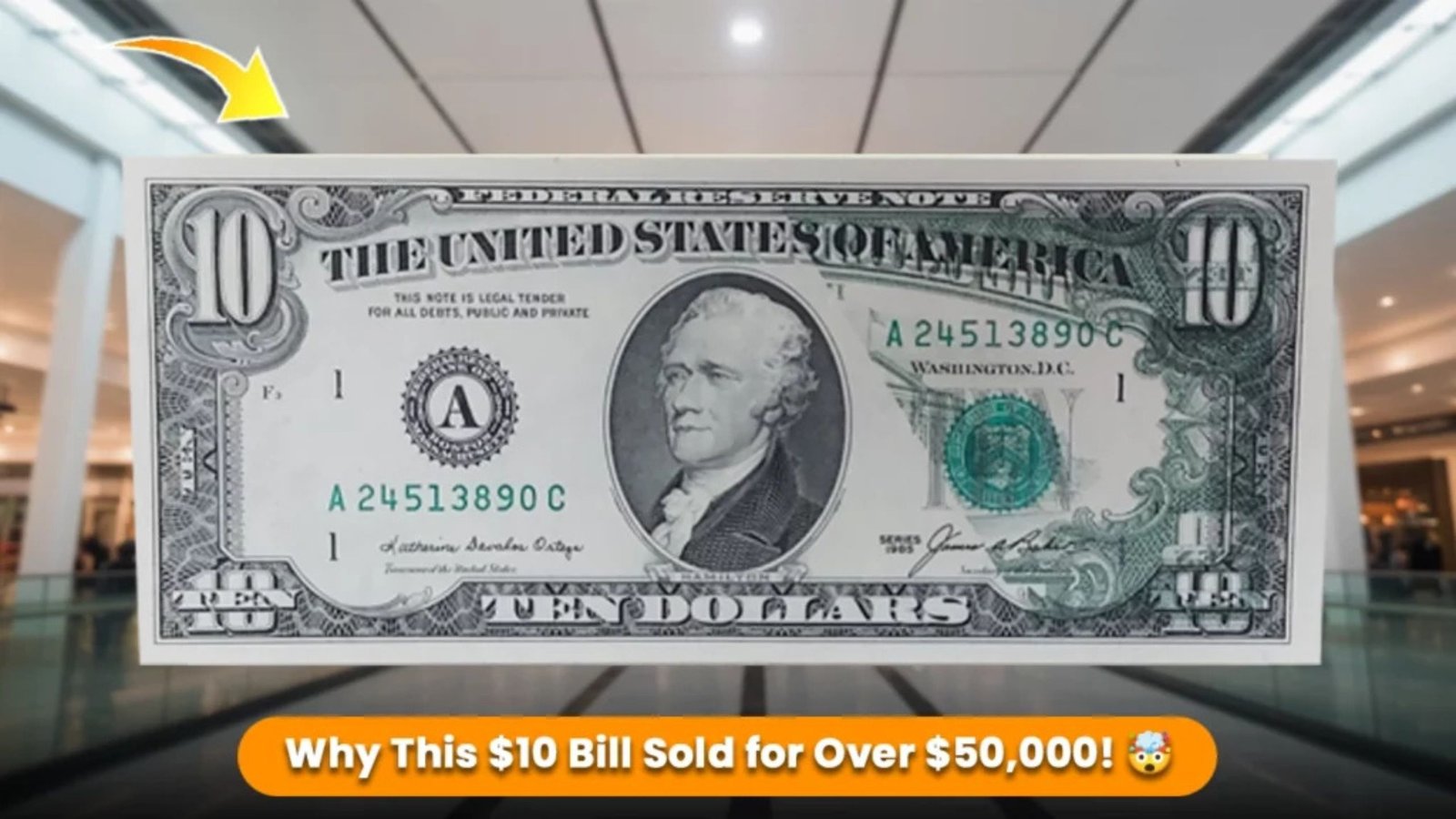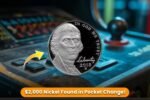This 2013 $10 Bill With Ink Error : Every day, thousands of people handle $10 bills without giving them a second thought. But one particular version of the 2013 $10 bill has proven that even modern paper currency can be hiding a fortune. Thanks to a rare ink error during printing, what appears to be an ordinary ten-dollar bill could actually be worth over $50,000 to collectors. It’s a stunning example of how one tiny mistake at the Bureau of Engraving and Printing can transform regular cash into a highly sought-after collector’s item.
What Makes This 2013 $10 Bill So Special
The rare 2013 $10 bill that has attracted such high interest features an ink error—more specifically, a misprinted portion of the bill caused by a faulty printing pass. This kind of error often results in missing or smeared ink, duplicated serial numbers, or parts of the design appearing off-center or out of place. On this bill, the error is dramatic enough to be easily noticed and rare enough to generate excitement among paper money enthusiasts and serious collectors alike.
The Power of Print Errors in Paper Money
Printing U.S. currency is a highly complex, multi-step process that involves several stages of ink application. Occasionally, one of those stages goes wrong, and the mistake escapes quality control. These errors—though unintended—are what give the bill its value. They are unpredictable, rarely repeated in large numbers, and nearly impossible to replicate. As a result, genuine print errors like the one found on this 2013 bill are considered both authentic and highly collectible.
How a Mistake Becomes a Treasure
Most error notes are discovered by accident, often in circulation, and their value is determined by a combination of rarity, severity of the error, and the note’s overall condition. The 2013 $10 bill in question, with its distinct ink flaw, has been preserved in excellent shape—helping it command a price tag over $50,000. It’s a reminder that in the world of currency collecting, imperfection can often mean perfection in value.
Where These Notes Might Still Be Found
While many such bills end up in the hands of collectors, there’s always a chance that a few remain in circulation, tucked into wallets or sitting in drawers, unnoticed. Because this is a 2013 series note—still relatively recent—there’s a real possibility that some people may have one without realizing its potential. Careful inspection of any odd-looking or misaligned print on your cash might reveal more than just an unusual design—it could reveal a windfall.
Why Collectors Pay Top Dollar for Flawed Bills
Collectors are drawn to these bills because they represent unique moments in U.S. currency history. Each error note tells a story of how even the most controlled printing systems can go wrong—and how rare it is when that mistake slips through. The scarcity of these bills, paired with the growing popularity of modern error note collecting, has led to soaring prices at auction, with some surpassing $50,000 in private sales.
A Reminder to Look Twice at Your Money
The story of the 2013 $10 bill with the ink error is a striking example of how everyday money can be worth far more than it seems. It underscores the importance of paying attention to the small details on your currency, especially when something doesn’t look quite right. Whether you’re a seasoned collector or simply someone who handles a lot of cash, it’s always worth taking a second look—you might be holding a rare and valuable piece of American currency history.
Frequently Asked Questions (FAQs..)
Q1: What is the 2013 $10 bill ink error?
The ink error on certain 2013 $10 bills refers to a mistake that occurred during the printing process. This can include misapplied ink, smeared or missing elements, doubled images, or parts of the design printed in the wrong location. These flaws make the bill unique and collectible.
Q2: Why is this error bill worth so much money?
Its value comes from a combination of rarity, demand, and visual impact. Only a few bills with this type of error escaped into circulation, and collectors are willing to pay tens of thousands of dollars for notes with dramatic and clearly visible mistakes—especially if they are in excellent condition.
Q3: How can I tell if I have one of these rare $10 bills?
Examine your 2013 series $10 bills closely. Look for misalignments, missing print layers, smudged ink, or any parts of the bill that look unusual or off-center. If something looks wrong or out of place, it could be a print error worth investigating.
Q4: What serial numbers should I look for?
While there’s no specific known serial number range for all ink errors, some collectible notes may have mismatched or duplicate serial numbers. However, for most ink error bills, the value lies in the visual error itself—not the serial number.




